*NURSING > EXAM REVIEW > NR 224- Exam 2 Review (LATEST, 2021): CHAMBERLAIN COLLEGE OF NURSING (VERIFIED ANSWERS, DOWNLOAD TO (All)
NR 224- Exam 2 Review (LATEST, 2021): CHAMBERLAIN COLLEGE OF NURSING (VERIFIED ANSWERS, DOWNLOAD TO SCORE A)
Document Content and Description Below
NR 224: Fundamentals Skills Exam 2 Review Chapter 41: Oxygenation Know alterations in breathing pattern/ alterations in respiratory functioning. o The three primary alterations are hypoventilatio... n, hyperventilation, and hypoxia. o Hypoventilation and hyperventilation are often determined by arterial blood gas analysis. o At rest, the NORMAL adult respiration rate is 12 to 20 regular breaths/min. o Hyperventilation: » rate and depth of respirations increase » hypocarbia sometimes occurs (also called hypocapnia, meaning reduced CO2 in the blood) » CAUSES OF HYPERVENTILATION: 1. severe anxiety, infection, drugs, or an acid-base imbalance induces hyperventilation 2. increased body temperature (fever) which causes increased metabolic rate 3. increased CO2 production results in patient’s rate and depth of respiration to increase 4. sometimes can be chemically induced » SIGNS & SYMPTOMS OF HYPERVENTILATION: 1. rapid respirations 2. sighing breaths 3. numbness 4. tingling of hands/feet 5. light-headedness 6. loss of consciousness o Hypoventilation: » respiratory rate is abnormally low, depth of ventilation is depressed » hypercarbia sometimes occurs (also called hypercapnia, means too much CO2 in the bloodstream) » occurs when alveolar ventilation is inadequate to meet the oxygen demand of the body or eliminate sufficient carbon dioxide » can lead to respiratory acidosis and respiratory arrest » in patients with COPD, the administration of excessive oxygen results in hypoventilation» for patients with atelectasis, a collapse in the alveoli prevents the normal exchange between oxygen and carbon dioxide, which results in less of the lung being ventilated, and hypoventilation occurs » SIGNS & SYMPTOMS OF HYPOVENTILATION: 1. mental status changes 2. dysrhythmias 3. potential cardiac arrest 4. in untreated, patient’s status rapidly declines, leading to convulsions, unconsciousness, and death o Hypoxia: » is inadequate tissue oxygenation at the cellular level. » it results from a deficiency in oxygen delivery or oxygen use at the cellular level. It is a life-threatening condition. » Untreated it produces possibly fatal cardiac dysrhythmias. » CAUSES OF HYPOXIA: 1. a decreased hemoglobin level and lowered oxygen-carrying capacity of the blood 2. a diminished concentration of inspired oxygen, which occurs at high altitudes 3. the inability of the tissues to extract oxygen from the blood, as with cyanide poisoning, 4. decreased diffusion of oxygen from the alveoli to the blood, as in pneumonia, 5. poor tissue perfusion with oxygenated blood, as with shock 6. impaired ventilation, as with multiple rib fractures or chest trauma » SIGNS & SYMPTOMS OF HYPOXIA: 1. apprehension 2. restlessness 3. inability to concentrate 4. decreased level of consciousness 5. dizziness 6. behavioral changes 7. unable to lie flat and appears both fatigued and agitated 8. VITAL SIGN CHANGES INLCUDE: — an increased in pulse rate — increase rate and depth of respiration — in early stages, blood pressure is elevated unless caused by shock — when worsens, respiratory rate declines as a result of respiratory muscle fatigue9. in a late sign of hypoxia, cyanosis, blue discoloration of the skin and mucous membranes caused by the presence of desaturated hemoglobin in capillaries would be present 10. central cyanosis observed in the tongue, soft palate, and conjunctiva of the eye where blood flow is high o Hypoxemia: » refers to a decrease in the amount of arterial oxygen. o Bradypnea: » rate of breathing is regular and abnormally slow » less than 12 breaths/min o Tachypnea: » rate of breathing is regular but abnormally rapid » greater than 20 breaths/minute o Hyperpnea: » respirations are labored, increased in depth, and increased in rate » greater than 20 breaths/min; occurs normally during exercise o Apnea: » absence of respiration lasting for 15 seconds or longer » respirations cease for several seconds » persistent cessation results in respiratory arrest o Dyspnea: » associated with hypoxia » it is the subjective sensation of difficult or uncomfortable breathing » shortness of breath usually associated with exercise or excitement » CAUSES OF DYSPNEA: 1. smoking, 2. pollution, 3. cold air o Orthopnea: » is an abnormal condition in which a [Show More]
Last updated: 1 year ago
Preview 1 out of 26 pages
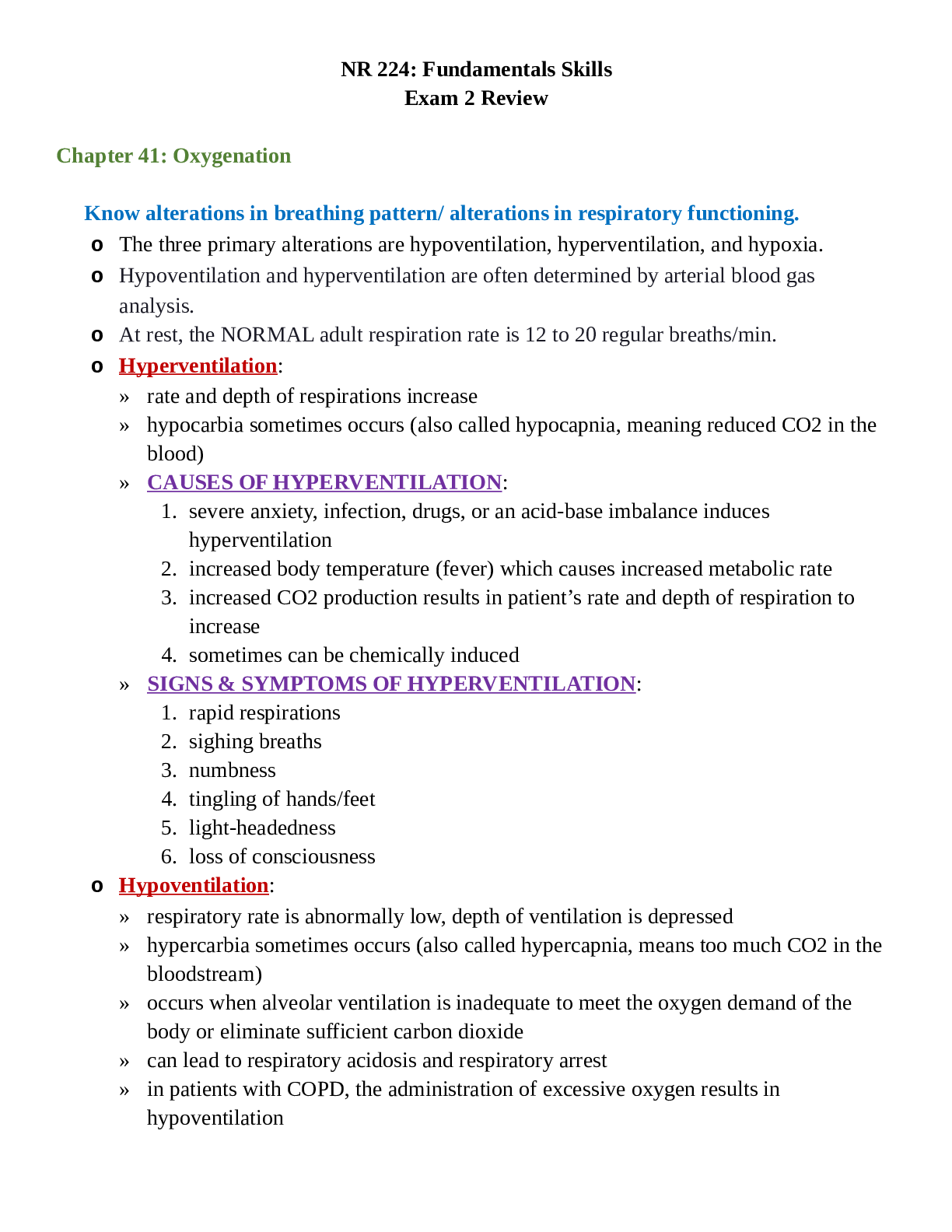
Reviews( 0 )
Document information
Connected school, study & course
About the document
Uploaded On
Jul 25, 2021
Number of pages
26
Written in
Additional information
This document has been written for:
Uploaded
Jul 25, 2021
Downloads
0
Views
27

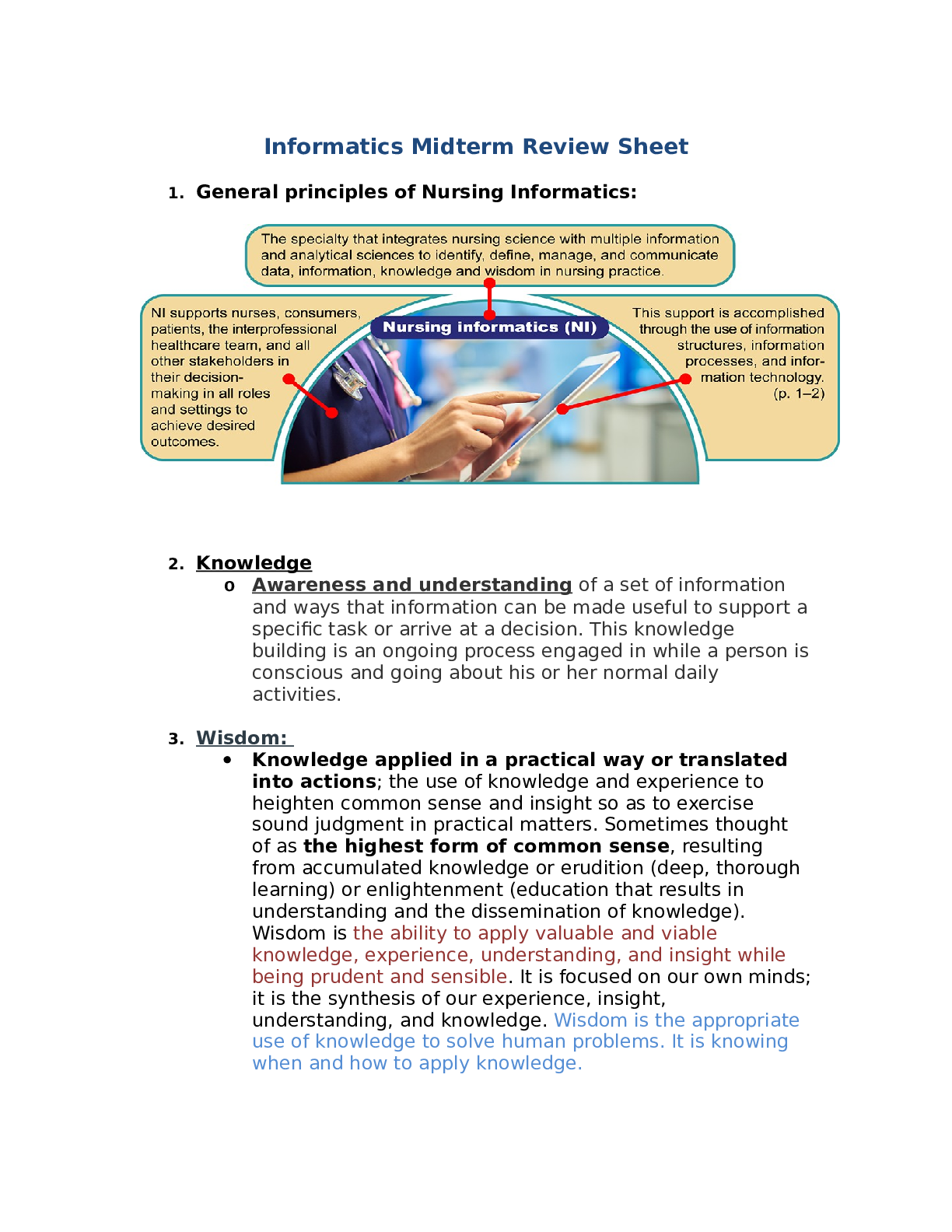



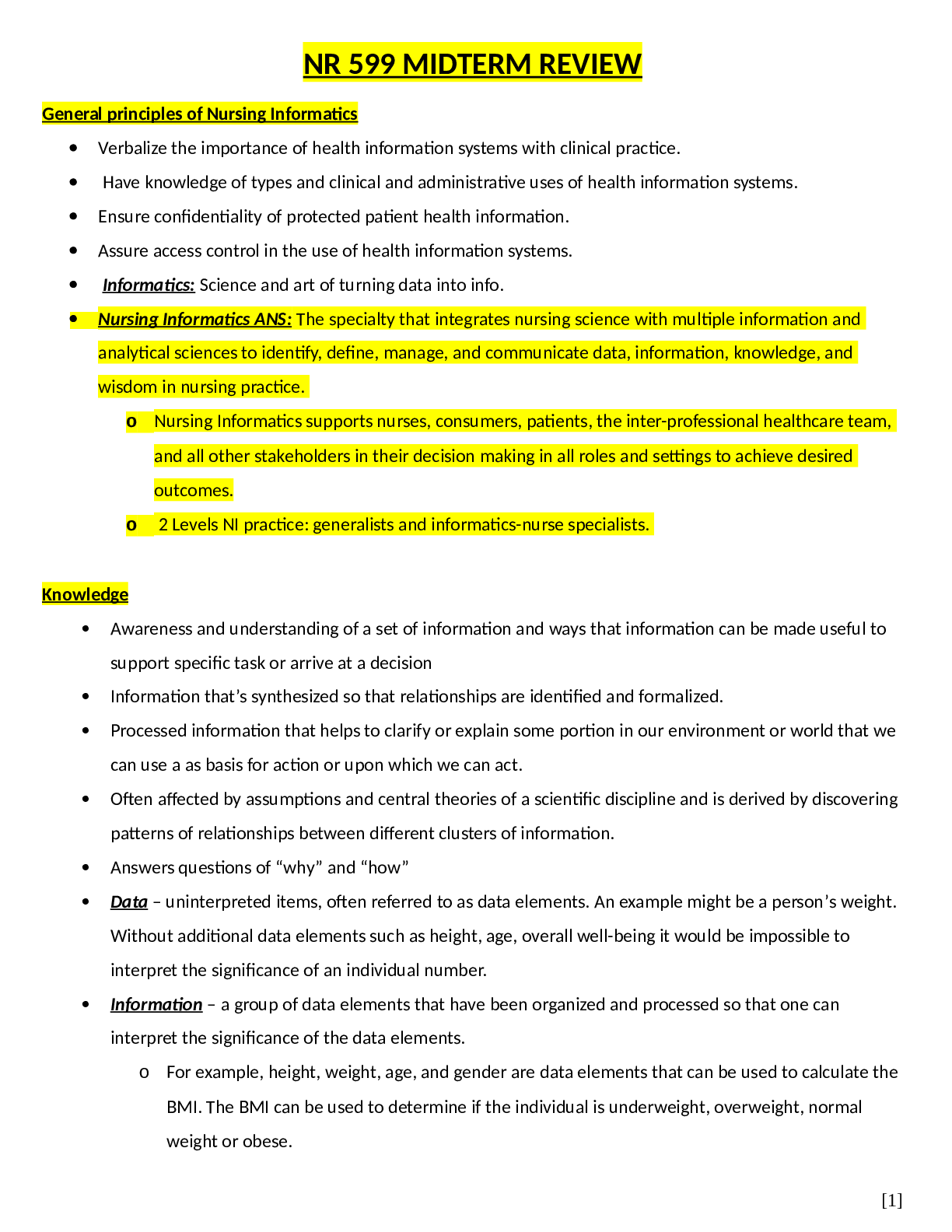
.png)
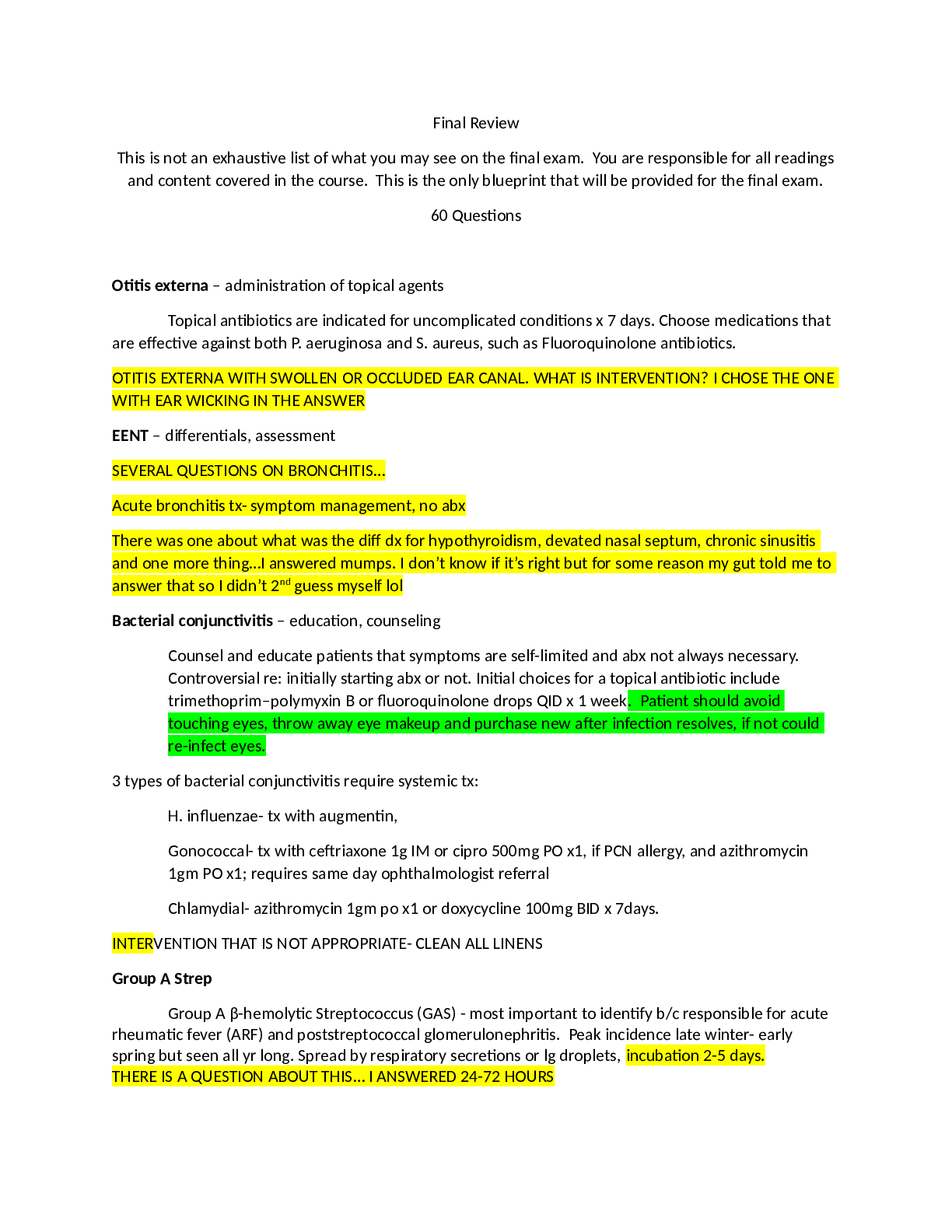
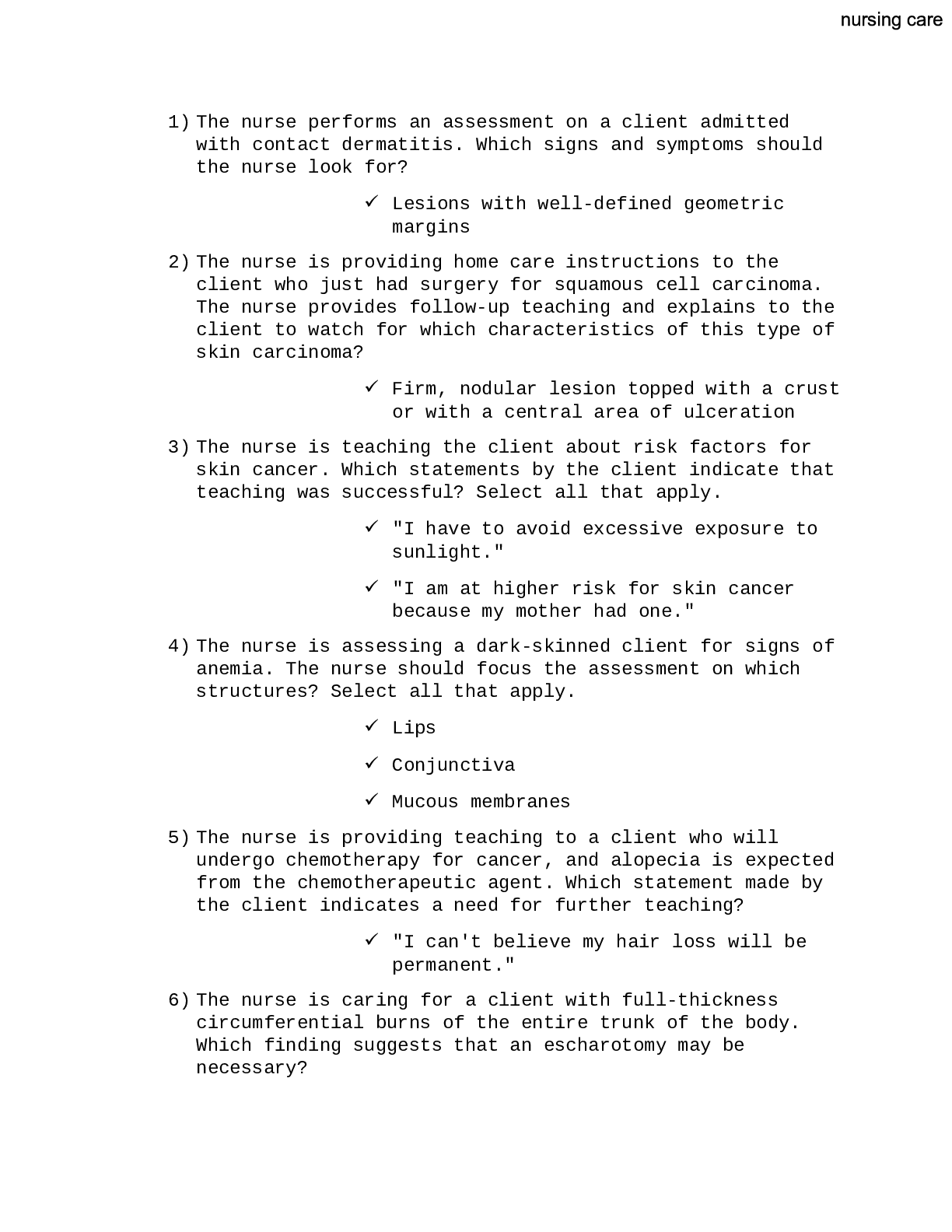
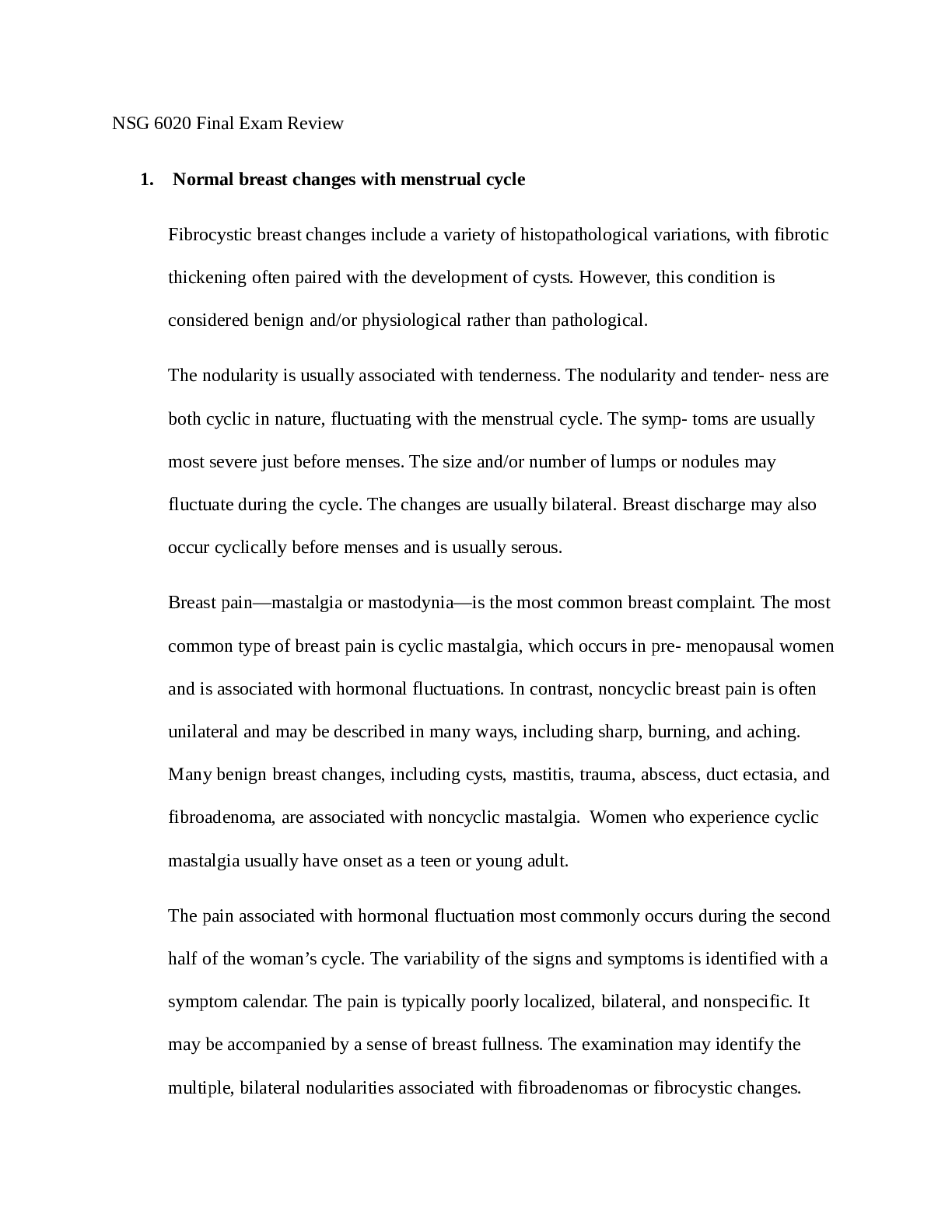


.png)







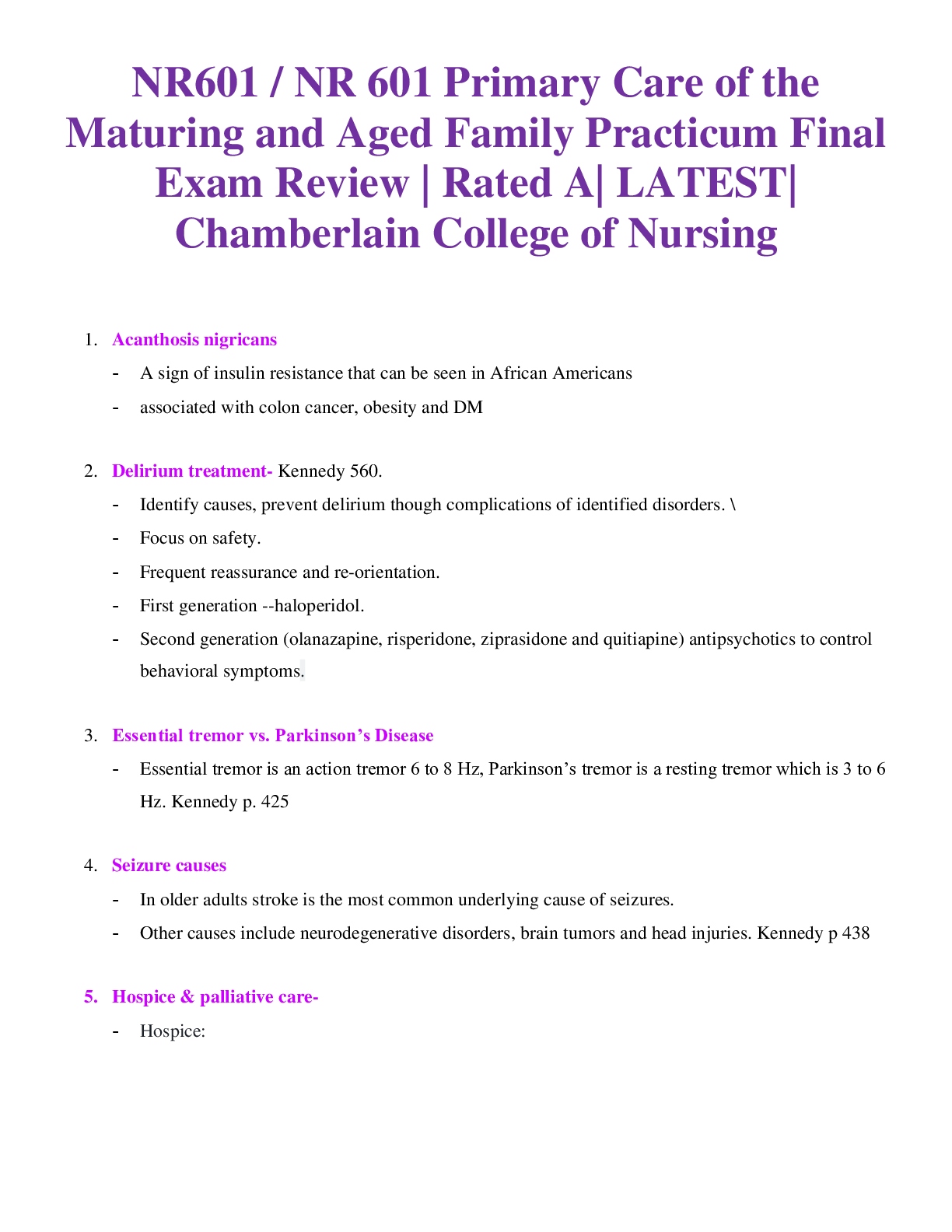
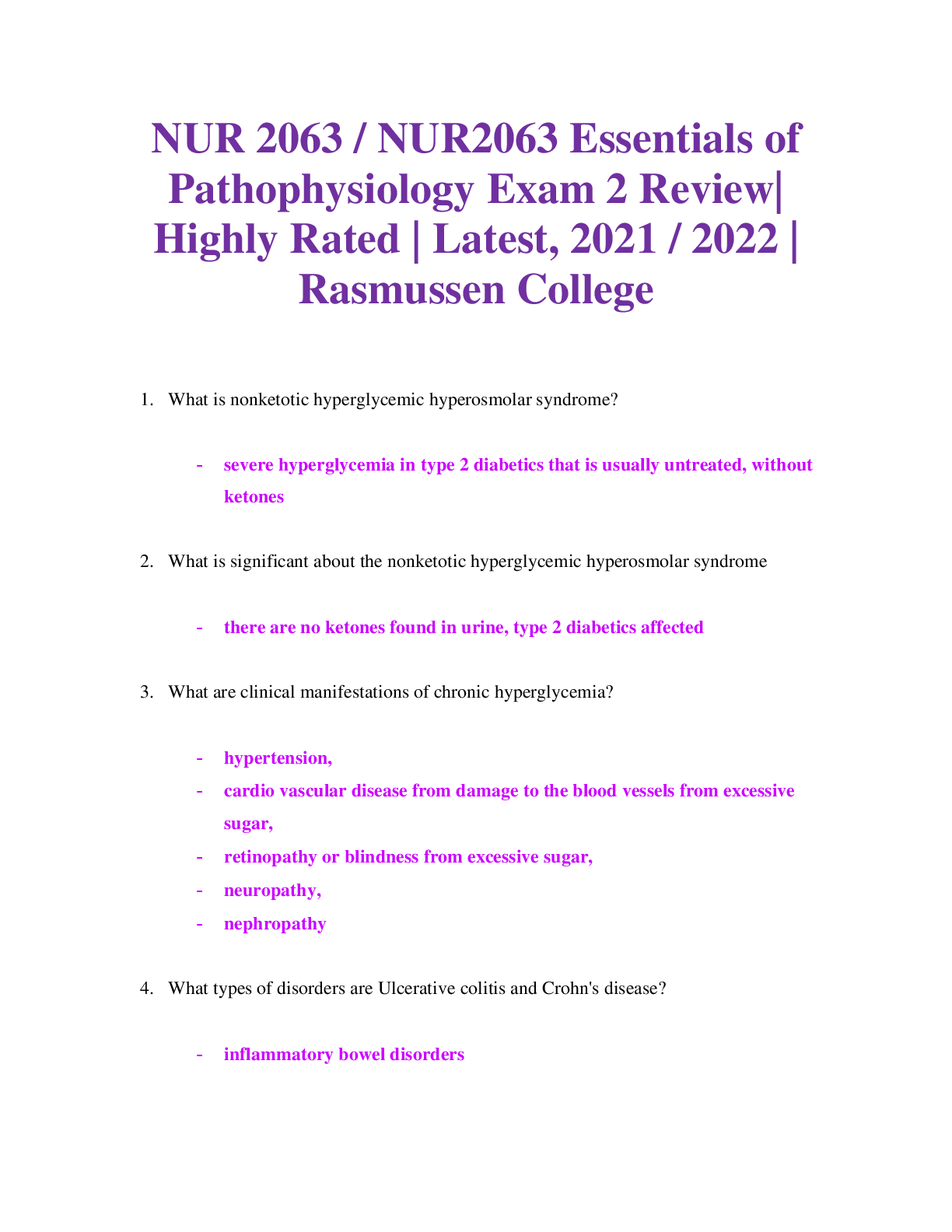

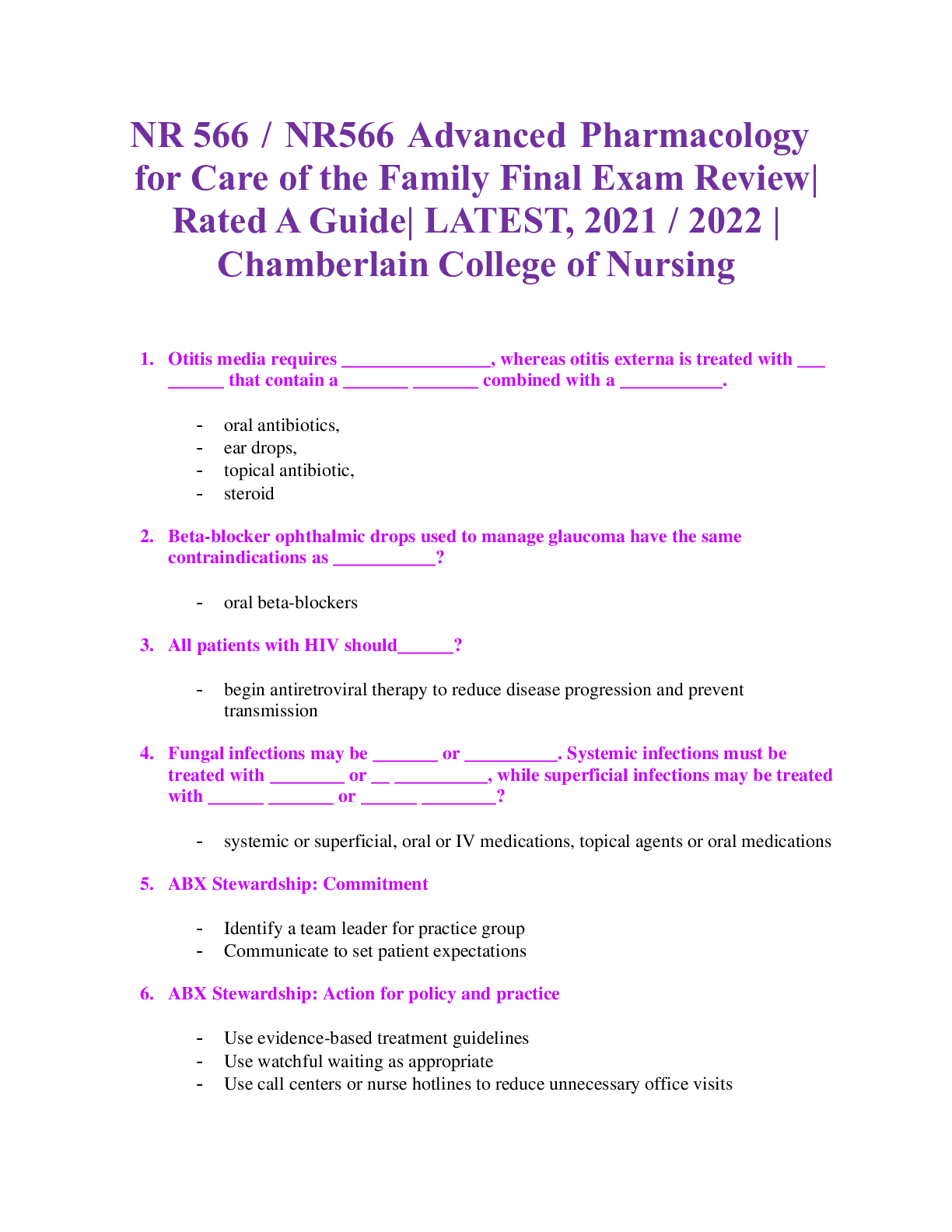
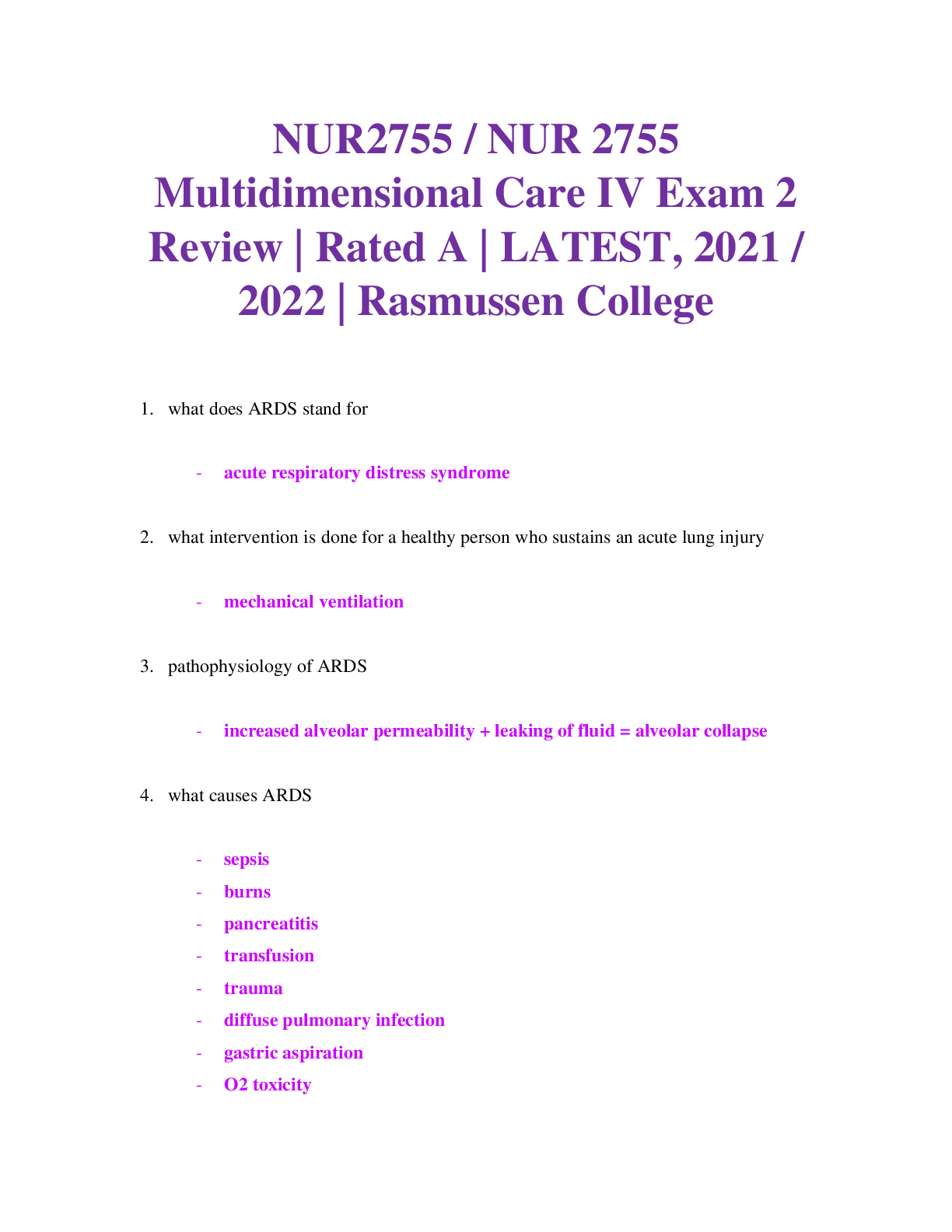
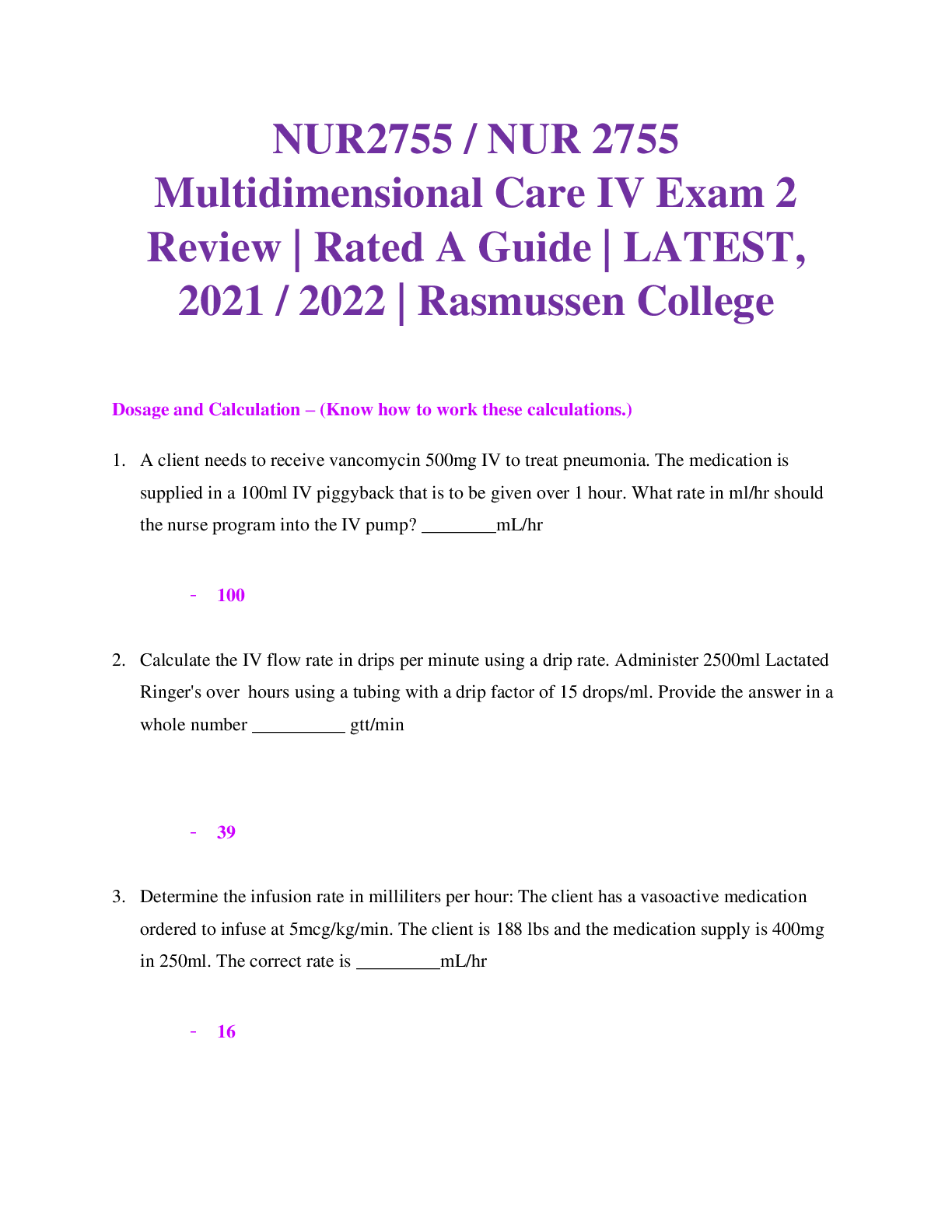



.png)


.png)

